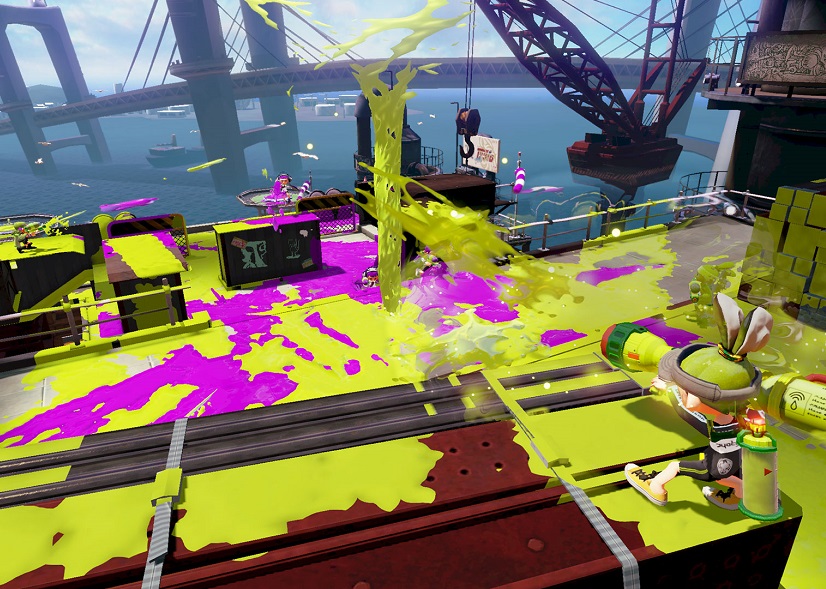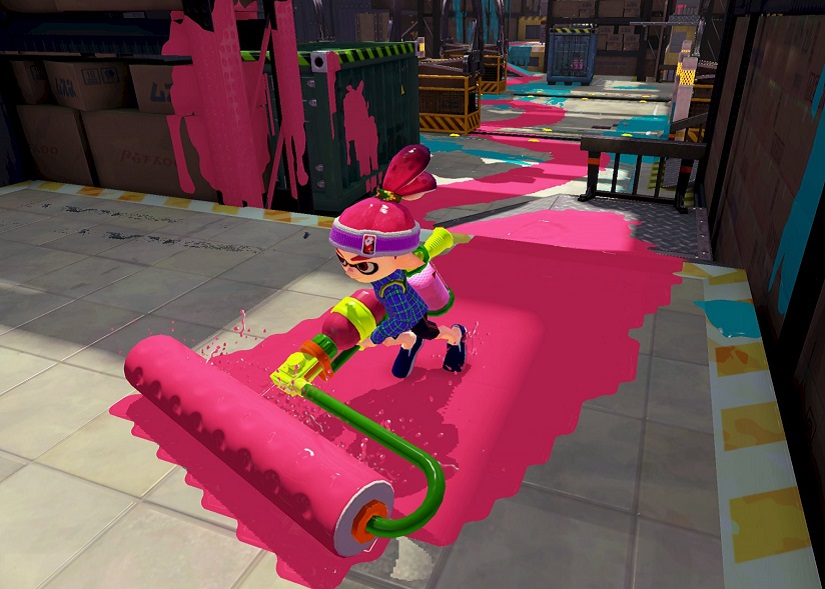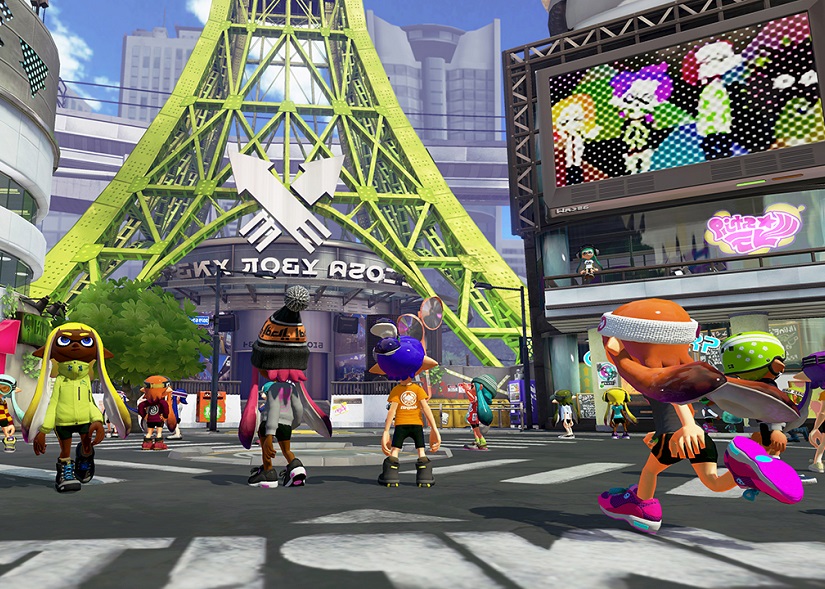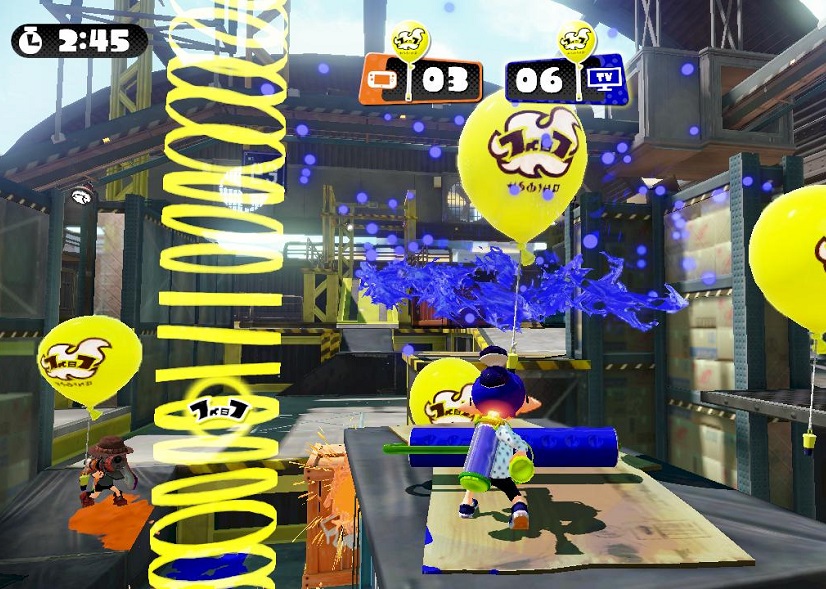The common refrain of Nintendo only making games for children may irritate fans no end, but as a statement, it is hard to argue with its accuracy. The suggestion, of course, is that no-one above a certain age would want to play their games, the patently ludicrous delusion of those still clinging to the juvenile approximation of violence with adulthood. Nintendo’s games are delightful no matter how old you are, and the reason is because few other companies in the business of creating entertainment are as effortlessly capable of producing experiences which instantly recall the intense, anarchic joys of childhood.
More specifically, Nintendo remembers that such pleasures never had anything to do with the saccharine ideal often portrayed by the media through bland snapshots of toddlers laughing with their parents or playing calmy in an immaculately organised nursery. The joys of childhood were in the misbehaving, the chaos and wanton disobedience of making a mess and breaking rules you didn’t even know existed. This rule-breaking has been key to Nintendo’s design philosophy ever since players were encouraged to discover a warp zone in the original Mario Bros by running along the level roof. The company may have become increasingly conservative in recent years, pumping out annual Mario and Zelda titles to bolster its struggling hardware, but that core design doctrine, that mischief is always more fun than obedience, has remained, even if not quite as pronounced as it used to be.
That’s where Splatoon comes in.
[youtube id=”XHlgKMUePck”]
Splatoon
Developer: Nintendo
Console: Wii U
Release Date: May 29th, 2015
Shooters and territorial control games are often cited as two of the most ‘hardcore’ (cough) genres in gaming, demanding pinpoint precision and intricate mastery of an array of complex systems and controls. With Splatoon, Nintendo takes both genres and inverts them via a simple but inspired twist, whereby the goal is not to conquer the enemy but the arena, performed with a compact number of immediately accessible options with infinite variation. In Titanfall, EA attempted to make shooting games accessible to beginners by offering low-skilled AI opponents as cannon fodder to artificially inflate scores. Such a clunky and patronising solution ignored the real sources of the problem: unneccessarily complex controls, confusing gameplay mechanics, and intimidating levels of aggression, to name a few.
Nintendo solves it by turning the genres’ most basic tenents on their heads. In Splatoon, the wisest tactical move is often to avoid the most heavily populated areas in favour of seeking out and reclaiming overlooked map real estate. As long as a player is able to navigate and hold the button to fire the ink whose coverage claims territory for their team and increases their personal score, they are able to make a positive contribution to the effort even if they don’t see an opponent the entire match (as unlikely as that admittedly is). With a tap of the gamepad’s touchscreen, you can at any point choose to jump to another location on the map provided an ally is nearby, providing an easy way out of sticky situations. Gunning down enemies with the game’s impressively varied and well-balanced arsenal is not without benefits, though the most important is tactical, forcing a member of the four-strong opposing team out of action for a few seconds and giving your team a momentary but essential advantage during which game-winning pushes into enemy territory can be made.
Achieving significant ground coverage also aids navigation, with your player able to transform into a squid and swim at high speed through ink of his or her own team’s colour, even up and over certain walls. Doing so robs you of all offensive capability, but adds a stealth element – using a well-placed ink trail to sneak up behind an enemy and splat them is a thrill discovered early and which never becomes any less gratifying – and a further tactical element to the gameplay, whereby choosing the moment to risk a charge down a precarious ink trail through enemy lines, using speed rather than power to survive, can lead to a potentially enormous advantage, especially with teammates able to immediately jump to your side should you make it.
For all that killing, or splatting, is de-emphasized, your choice of weapon can make a huge difference to your role in the game. Rapid-fire weapons offer little range or accuracy, but balance ground coverage with reasonable offensive power when pushing towards choke points. Rollers (literally giant paint rollers) can lay down a wide, continuous path of ink, essential for quick navigation and aggressive land-grabbing, but are immensely vulnerable to attack from above or at a distance. Chargers, the game’s sniper rifles, are specialised high-power weapons with the greatest focus on taking out opponents, but can put together huge scores with thoughtful use. The many variations on these weapons offers a smorgasbord of in-between options for those whose skillset doesn’t comfortably fit into one specific category. Overly efficient Aerospray aside, they all offset each other nicely.
In addition to your primary weapon are subs and specials. Subs are the equivalent of Call Of Duty‘s equipment, offering both explosive and tactical options. Specials are the game’s version of killstreaks, unlocked once you have covered or reclaimed a certain amount of territory. These create some of the game’s few balancing issues. While each has its purpose and can be an invaluable asset in the right hands, some subs and specials are noticeably more formidable than others: the Kraken, for instance, transforms the player into an invincible sea monster who can cut an ink trail through enemy territory and destroy all in its path. The Killer Wail sonic blast, with its cover-permeating range and wide radius, becomes insanely powerful in narrower maps.
None is game-breaking by any stretch, but Nintendo’s solution, locking weapon sets to prevent players chopping and changing to the most devastating combinations, only serves to undermine the solid balance of the primary weapons by making certain sets inviable should the supporting options not be strong enough to compete. That lack of customisation is symbolic of what holds Splatoon back from making the most of the phenomenal gameplay experience at its core. Nintendo’s refusal to give players the full range of options that should be a genre standard feels very much like unneccesary caution from a company with a young audience venturing on its own for the first time into a genre traditionally reserved for more advanced players. Having to quit out of online lobbies to adjust your load-out is a ridiculous frustration, especially for such a tactical game, when most online shooters allow you to not only change in-between matches, but often during them as well.
The number of clothing options available from the Inkopolis hub in which to kit out your avatars is also undermined by the associated perks being entirely randomised bar one. This is, again, presumably to prevent players stacking themselves with a small number of powerful options, but a more balanced set would prevent that more naturally. It instead encourages players to choose aesthetic options they may not like in order to take advantage of the boosts they provide. It ceases to be about players expressing themselves and more a slightly grating push to engage in a system of cynical capitalism encouraging results and function over creativity and self-representation. Achieving a high enough level allows you to re-roll your perks, but it’s a costly option that continues to put players at the mercy of a random draw.
Online multiplayer is the game’s overwhelming focus and runs smoothly despite suffering the occasional connection failure which also blighted Mario Kart in its post-launch months. Fair warning, there have also been reports of a small number of players struggling to connect at all. Offline, the single player mode is short and sweet, barely five hours in length and, outside the endearingly barmy boss fights, feels more like an extended training mode than campaign in and of itself. Nevertheless, it offers impressive variety in visuals and design, combining the look and obstacle course structure of Super Mario Galaxy 2 with the spraying mechanic from Super Mario Sunshine. There’s little incentive to replay levels once they’ve been completed, but collecting the secret scrolls hidden in each reveals an enjoyably silly and surprisingly detailed lore underpinning the game’s squids vs octopodes conceit.
It’s a shame there isn’t an arena mode to battle AI opponents in the multiplayer maps, and the local multiplayer option, while frantic enough on the smaller maps, is so stripped down (involving popping balloons rather than territory coverage, for whatever reason) that its appeal is likely to be decidedly short-term. Restricting player numbers to two is another annoyance, especially when trawling the bigger maps becomes a drag which could have been at least partially alleviated by allowing four players to enter the fray in 2v2 competition. The local multiplayer control options are also incomprehensively narrow and counter-intuitive: the player using the gamepad can only play on the tiny gamepad screen, giving the player using a Pro or Classic controller the entire TV to themselves. The lack of a splitscreen option reeks of Nintendo trying to force usage of the gamepad’s features in a way that also permeates the rest of the game. Outside local multiplayer, the gamepad is the only available control option, despite none of touchscreen features requiring functions that the Wii U’s Call Of Duty titles haven’t already handled quite ably for non gamepad-users by allowing players to toggle transparent on-screen maps. The inability to use the Wii remote/nunchuck combo is especially jarring given what a natural fit pointer aiming would seem to be for Splatoon‘s rapid-fire gameplay.
If the absence of control choices and customisation is an annoying but hardly overwhelming issue, the dearth of options even in the game’s online multiplayer is far more difficult to overlook. While the limited single player and local multiplayer are forgiveable and the novelty of the bold gameplay is enough to keep things fresh (to use the game’s own 90s-inflected lingo) for hour after hour of play, launching with only five maps and a single mode – with one more of each unlocking tonight – in the headline online multiplayer is entirely unacceptable. That custom matches with friends reportedly won’t be unlocked until August only makes the situation all the more ridiculous.
The staggered roll-out of maps and modes in free DLC can be interpreted as Nintendo giving players time to get used to the specific demands of the game, or less optimistically as a cynical bid to make players hold onto it and reduce the second-hand market. With upcoming multiplayer maps already existing in the single player mode – levels 08 and 20, if you’re after a sneak-peek – it taints what is otherwise one of Nintendo’s most exciting and innovative releases in years. While the game’s budget price in Europe makes it worth the plunge regardless of those early shortfalls, recommending it at the full $60 price to American buyers is considerably more difficult, at least until the full complement of 14 maps has been released in a few months’ time – at which point, the game might well be cheaper anyway. Splatoon is a game that demonstrates all the subversive, groundbreaking glee that marks out the very greatest of Nintendo’s work. Now they just need to finish it.




